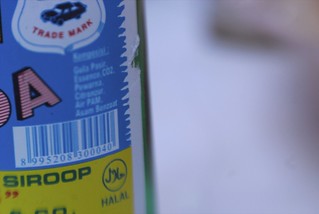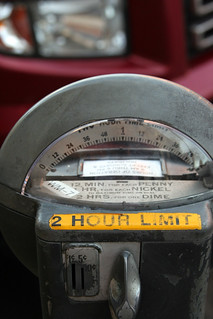
Photo courtesy of United Nations in Armenia
Once upon a time I worked as a translator. After that I worked for a time in a bilingual call center.
Although I did have conversational proficiency in Chinese at the time, I was routinely given credit for being far more fluent than I actually was.
Bear in mind that I am not of Chinese descent. I have no Chinese heritage whatsoever and didn’t start learning the language until I was 18 years old. I studied for less than three years, taking only three classes.
Yet with less than three years of study I was often complimented by native speakers on my Chinese speaking skills. Chinese are customarily very polite in social situations but I knew the compliments were more than just politeness. Those who dealt with me over the phone who had no opportunity to see with their own eyes that I am not Chinese often mistook me for being Chinese.
I’m not saying any of this to brag.
The point of the story
How did I do it?
How could I be mistaken for a native speaker of a language I learned as an adult and studied for only three years? How could I be frequently judged as being far more fluent than I actually was?
Simple.
Little things mean a lot.
That sounds trite so let me explain.
There are a handful of relatively small things that I stumbled into doing more or less accidentally, that are different from what most others do, and that made all the difference in how my skills were perceived.
When I was studying Chinese, one exercise we did frequently was take a sentence in English and translate it into Chinese. This is a very common method used in teaching all languages. However one of the things I noticed was that all of my classmates translated each individual word in the sentence. That may be fine most of the time but all languages have idiomatic expressions and non-literal word usage.
Idiomatic expressions and non-literal word usage
This really stuck out for me when I’d hear a conversation translated.
Bob: Hey, I haven’t seen you in a long time. How are you?
Harry: I’m fine. And you?
Bob: Just great.
Exclamations like “Hey” don’t usually have a direct translation so students almost always stumble on them. Harry’s response would often be translated into the equivalent of “I’m fine. Also you?” And then Bob’s response would come out something like “Merely great.”
You see this often in English sentences that were obviously written by a non-native speaker or were translated from another language.
Similarly, sentences like “Don’t worry about the damage. It’s not that bad.” Throw translators for a loop. Use of the word “that” in this context actually means “very” instead of being a pronoun for the thing over there. By translating the words instead of the meaning, you end up with a sentence that sounds awkward and may even be unintelligible. (Contractions also throw some people, especially when translating into a language that doesn’t use them.)
So the above sentence might come out something like “Do not worry about the damage. It is not that-thing-over-there bad.”
The trick
My trick was to translate the meaning instead of the words. In a sense, I guess you could say that I double translated everything. First I would rephrase the original sentences, essentially translating them from English to English, and then I would translate them into Chinese.
Even if I paraphrased a little, by conveying the same meaning I was lauded for the excellence of my translations. Of course there is a fine line with paraphrasing. You do have to convey the exact same meaning and not something merely similar.
Another trick I learned as an offshoot of this was the use of idiomatic expressions in the target language. In English we use phrases all the time that don’t mean what their words literally say. We have hundreds of them. Phrases like:
- make her weak in the knees
- bring him to his knees
- a ten megawatt smile
- get off my back
- walking on cloud nine
- a razor-thin margin
- up at the crack of dawn
Well guess what? We’re far from the only ones who do it. Every culture in the world has its own set of idiomatic expressions. They’re all different but if you can learn just a few — perhaps a couple dozen of the more common ones — and use them correctly, it will really set you apart from other non-native speakers.
In fact, that’s where the title for this article came from. It’s the translation of the moral to a story. Think of the Chinese equivalent of Aesop’s Fables. Every American knows phrases such as “birds of a feather flock together”, “do unto others as you would have them do unto you”, “united we stand divided we fall” or “slow and steady wins the race”. In fact, these expressions are so well known that you often only have to give part of it and the listener will grasp the meaning of the entire thing, filling in the blanks that you left.
Chinese fables work the same way. So, in fact, do those from Spain, Morocco and Madagascar. Throughout the world, each culture and language has some stories that are so well-known to native speakers of that language as to be essentially universal. And yet they are frequently completely unknown to non-native speakers.
You’d have to know the story behind the title in order to fully grasp its meaning.
Even then, you have to grasp the symbolism behind the story to fully get the real meaning.
The story behind the title
Briefly, the story is about a frog who lives at the bottom of a deep well. He looks up and can see only a small circle of sky. Having never been anywhere but his little well, he believes that this is all that exists of the sky; it is only as big as the opening at the top of the well.
There’s more to the story but the important part is that this phrase is used to describe someone who sticks stubbornly to a very narrow view of things. More broadly, it means to be narrow-minded or dogmatic.
Without knowing just a little of the story, one might never guess that the frog at the bottom of the well alludes to being dogmatic.
By learning just a few dozen of these stories, their morals and the deeper meanings behind them, I was able to sprinkle the morals of the stories into my speaking.
Tying this all back to marketing
I am a marketer and a copywriter. So of course this article is ultimately about marketing. The key thing is that the difference between decent marketing, good marketing and truly great marketing is almost always just a matter of a few small things.
At its core, very little of the secrets I revealed in this article should be truly novel to you. In hindsight, after reading them, every one of my tricks seems rather obvious. And yet, without my going out of my way to point them out, you might have gone your whole life without being consciously aware of them.
All the best marketing tricks are exactly the same. Only with good training and consciously paying attention to certain things (or hiring a copywriter who has the training and pays attention) can your marketing efforts go from good to great.
Click any of the icons below to retweet these passages from the above article.
![]() The Frog at the Bottom of the Well
The Frog at the Bottom of the Well
![]() How I was mistaken for a native speaker of a language I studied for only 3 years
How I was mistaken for a native speaker of a language I studied for only 3 years
![]() You see this in English sentences written by a non-native speaker
You see this in English sentences written by a non-native speaker
![]() By translating the words instead of the meaning, you end up with…
By translating the words instead of the meaning, you end up with…
![]() Every culture in the world has its own set of these
Every culture in the world has its own set of these
![]() The Chinese equivalent of Aesop’s Fables
The Chinese equivalent of Aesop’s Fables
![]() Chinese fables work the same as those from Spain, Morocco and Madagascar.
Chinese fables work the same as those from Spain, Morocco and Madagascar.
![]() Without knowing the story, one might never know that The Frog at the Bottom of the Well means…
Without knowing the story, one might never know that The Frog at the Bottom of the Well means…
![]() In hindsight, every one of these tricks seems rather obvious.
In hindsight, every one of these tricks seems rather obvious.
![]() Only with [this] can your marketing efforts go from good to great.
Only with [this] can your marketing efforts go from good to great.



 QR Tags
QR Tags


